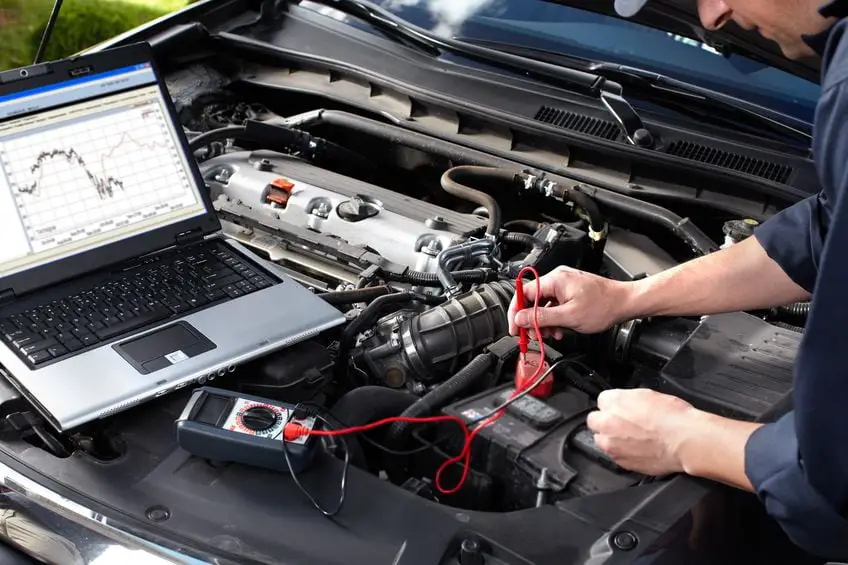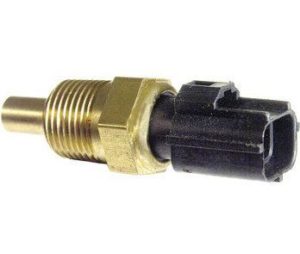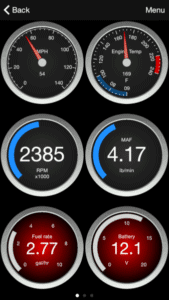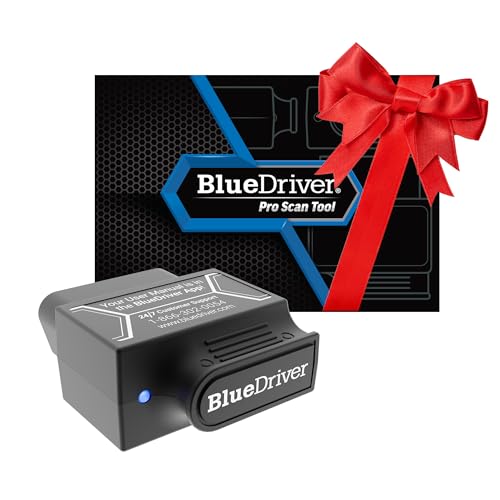
Using OBD2 scanner to troubleshoot live engine sensor data
Hey I’m Matt – Most DIY car fixes can be easily achieved using a basic OBD2 scan tool and today we’re going to help you understand how to read live data from OBD ii diagnostic scanners.
It doesn’t matter if you have a wired or wireless code reader, or if you prefer Wi-Fi over Bluetooth depending on your preferred device. Learning how to interpret the live data from an OBD2 scanner is an excellent way to diagnose drivability problems in your ride.
Before cheap OBD2 scan tools became mainstream, mechanics had to purchase expensive factory scan tools. This especially holds true for import European vehicles that demand a higher level scanning tool.
But now, even the most basic OBD2 scanner can not only scan and read diagnostic trouble codes (DTC). It can also read live sensor data. And while the data alone will not reveal the exact fix needed to sort out any problems with the motor, it will give you a bird’s eye view of the problem so you can pinpoint the actual fault.
But in order to do this, you’ll need to learn how to read live data from your OBD2 scan tool.
First Things First
Before starting your engine diagnostics, you’re going to need a code reader, aka OBD2 Scanner. We’ve written lots of articles about different scanners that we use, so check out these if you don’t yet have one:
More options:
- OBD2 scanner for Android – You’ll also need an app like Torque Pro (paid) or Torque Lite (free)
- OBD2 scanner for iPhone/iOS – You’ll also need to download an app like OBD Fusion
- Corded OBD2
After you’ve got that done, make sure it’s plugged in to the port and paired with your phone (if you have a wireless one).
You want to make sure your car/truck is in Closed Loop mode. This just means that the engine is warmed up to a nice 180-190*F so you’re seeing the true numbers from the sensors rather than the generic numbers from the computer.
How to Interpret Generic Scanner Data
All 1996 and newer vehicles sold in the USA are OBD2 compatible. However, the amount of OBD2 parameters obtained will depend on the specific OBD2 protocol of the vehicle. Under the original OBD2 specification (older OBD2 protocols such as SAE J1850 PWM/PWV and ISO 9141-2), up to 36 parameters are available.
Pro TipLook up generic OBD2 codes here
But in newer OBD2 vehicles that support the CAN-BUS protocol, you have up to 100 generic parameters at your disposal. This means there is a greater quantity of live data available, which will make it easier to determine any type of fault in the vehicle, including non-engine related trouble codes including ABS, transmission, and airbag trouble codes.
STFT (short-term fuel trim) and LTFT (long-term fuel trim).
When reading live data from any OBD2 scan tool, it is best to always check the STFT (short-term fuel trim) and LTFT (long-term fuel trim). The fuel trim is crucial in determining how the ECU is controlling the fuel delivery in the engine.
Both the STFT and LTFT are expressed as a percentage by the scan tool. The ideal reading for the STFT and LTFT is within the range of 5% (you don’t want to see anything higher than 10% or lower than -10%).
Higher/Positive percentages in the fuel trim means the engine computer is trying to compensate for a lean condition in the motor by enriching the mixture. This means the vehicle might have problems with the fuel system, injectors, oxygen sensors, or mass air flow sensor. This can also mean vacuum leaks in the system.
On the other hand, a Negative/Lower fuel trim means the CPU is attempting to switch the fuel mixture to lean to recompense a rich mixture. From this reading, it could possibly mean excessive pressure or leaking fuel injectors, a ruptured fuel pressure diaphragm, or a faulty EVAP system. If the STFT or LTFT readings are exceeding 10%, this signifies a problem in the fuel system.
No matter the case, the first live data you should read upon connecting the OBD2 scan tool is the STFT and LTFT. This alone will give you an idea on the possible causes of any engine issues in your vehicle.
In normal cases, the STFT data reading should shift rapidly between rich and lean. The LTFT should indicate a more stable percentage. Remember the fuel trim should be checked in three stages:
- During engine idle
- At 1,500 rpm; and
- At 2,500 rpm
It is important to check the fuel trim in all the required operating stages. As an example, if the LTFT is at 20% during idle but adjusts correctly to 5% at 1,500 and 2,500 rpm, the focus should be on certain problems that cause the lean engine condition at idling speed. But if the LTFT is at 20% at all stages, this could mean a problem with the fuel supply such as a bad fuel pump.
Ratchets And Wrenches did a great video explaining in-depth fuel trims. Go check it out.

Engine Coolant Temperature
The engine coolant temperature should be at 190 Fahrenheit or higher when the engine is at the ideal operating temperature. A lower ECT means the ECU will enrichen the fuel mixture and raise the idling speed to compensate for a cold motor.
Intake Air Temperature and Air Injection

If the engine is cold, the intake air temperature and the engine coolant temperature must be between 5-degrees Fahrenheit. Also, the air injection will be in open loop upstream mode. This means the air is quickly routed to the exhaust manifold to speed up the heating of the oxygen sensors and to burn off excess hydrocarbons.
But if the engine is hot, the engine will be in closed loop downstream mode. This means the air will be forced into the catalytic converter to burn off the hydrocarbons. If the engine is decelerating from higher rpm, the air is shifted into atmosphere mode to prevent backfire in the combustion chamber.
If the engine is in closed loop mode, the air should always be in downstream mode. The oxygen sensors are the primary basis for the air/fuel mixture if the system is in closed loop.
Mass Airflow
The MAF or mass airflow sensor reading will be displayed as grams per second or pounds per minute. Most of the MAF sensors in modern vehicles are equipped with a hot wire that calculates the volume of air. If the wire is dirty or damaged, it can cause an inaccurate reading which causes the ECU to either shift to a lean or rich condition.
Manifold Absolute Pressure
The MAP or manifold absolute pressure sensor is utilized by the ECU to determine the engine load. Depending on the make and model of your vehicle, it can be equipped with either a MAF and MAP sensor or both. The normal MAP sensor reading is 29.6-inches hg at sea level if the engine is not running and around 9.6-inches hg at idling speed. The reading will rise to as high as 29.6-inches at wide open or full throttle.
Ignition Timing
The ignition timing live data will indicate the amount of timing the CPU is adding or subtracting based on specific sensor inputs. If the MAP sensor is putting out a lean command, the CPU will adjust or advance the timing. If the MAP reading is rich, the CPU will retard the timing. If the engine is under heavy load, the CPU will also retard the timing to prevent early detonation.
Oxygen Sensors
The output voltage of the O2 sensors are utilized by the CPU to control the fuel mixture in the motor. You can also use live data from the O2 sensors to check the condition of the catalytic converter. The oxygen sensors will need to exceed 0.8-volts and drop below 0.2-volts and transition quickly as you step or snap-test the accelerator pedal. The switching rate of the rise and drop in O2 sensor voltages should happen in less than 100 milliseconds.
Depending on the type of vehicle, there will most likely be two or more O2 sensors in the exhaust system. If the catalytic converter is working properly, the rear O2 sensor will hold a steady voltage reading.

Engine Revolutions per Minute or RPM
The RPM or revolutions per minute is the engine speed. The ECU utilizes the RPM reading to fire the ignition coils and to pulse the fuel injectors. In vehicles equipped with an automatic transmission, the RPM readings will be utilized by the ECU to control the operation of the torque converter and to control the shift points as you drive the vehicle.
Conclusion
Hopefully this gives you a good basic understanding of how to read live data from OBD II scanners. There’s certainly enough material for each of these sensors that we could write an entire blog post for so you’ll have to use this guide a roadmap. If we find time in the future we’ll add more to this 🙂
Matt

